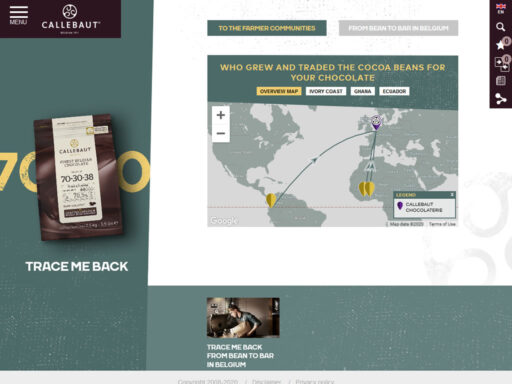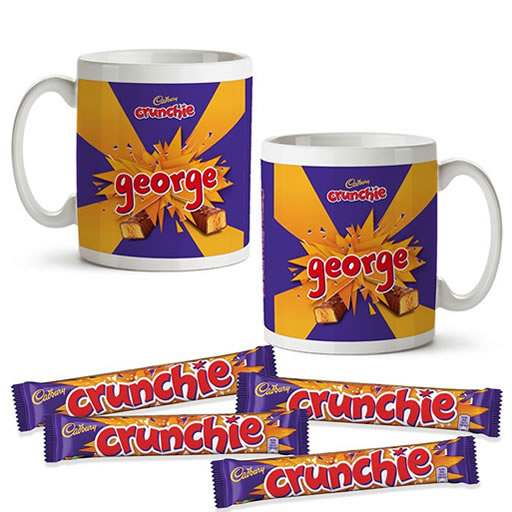In this article:
I first heard about Lidl's new Way To Go! chocolate bar range on social media and spent a month trying - and failing - to find it in my local stores. Then I struck the jackpot!
These new Fairtrade chocolate bars follow a near-identical format to Tony's Chocolonely, right down to the weight and even the varieties of the 32% milk chocolate, 70% dark chocolate, plus Caramelised Almonds & Sea Salt.
Like Tony's, these bars are made using 100% traceable cocoa from West Africa, making Lidl's Fin Carré Way To Go! range the first own-label chocolate bars in the UK to do this. Furthermore, the company guarantees its cocoa farmers in the Kuapa Kokoo cooperative in Ghana the Fairtrade Minimum Price for cocoa, paying a premium over the farmgate price set by the Ghana Cocoa Board (Cocobod).
My local store only had the milk and dark chocolate bars and these were on a '2 for £3' promotion, so I clutched a bar of each type, paid my money, and hurried home to see just how similar these bars were beneath the packaging.
Packaging
As with Tony's Chocolonely, size matters. It seems chunky 180g bars is the only way to make an impact with the general public.
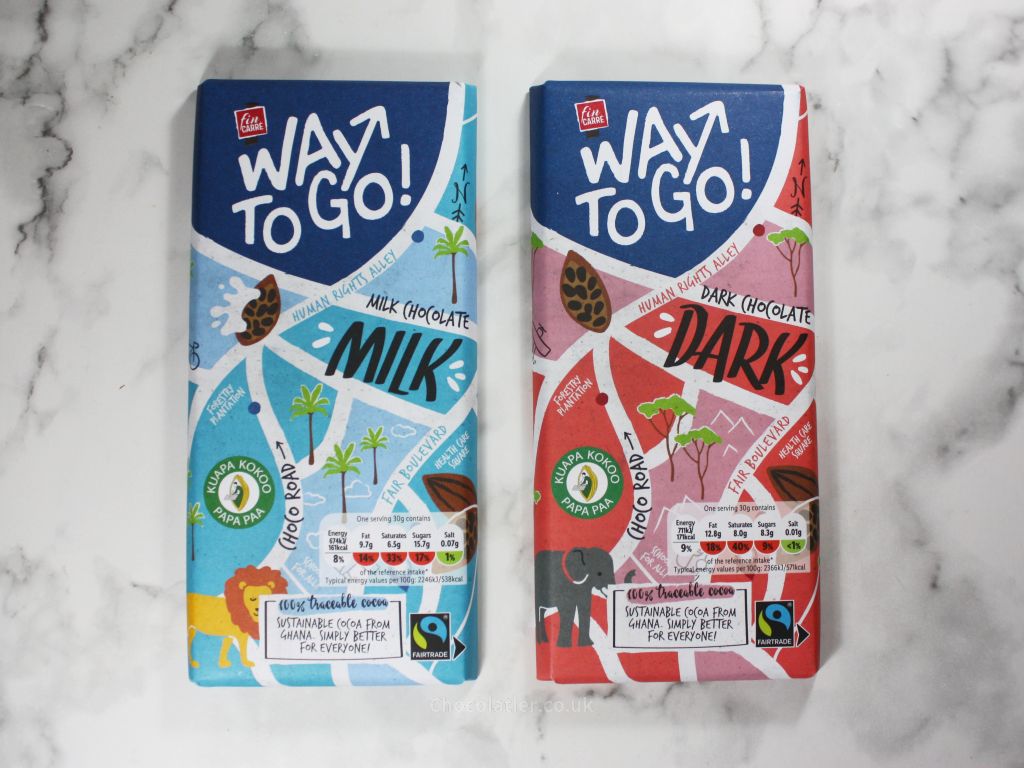
The designs of the packaging vary slightly on each bar. The 32% milk chocolate bar features a blue colour palette (Tony's is red) while the 70% dark chocolate bar favours red (Tony's is blue). Both designs feature a map with street names to convey it's feel-good credentials, such as Human Rights Alley and Fair Boulevard. The milk bar wrapper features a lion motif while the dark bar features an elephant.
A small box at the bottom mentions "100% traceable cocoa" in a scrawly, difficult-to-read font, along with the phrases "sustainable cocoa from Ghana" and "simply better for everyone", next to the Fairtrade logo.
I quizzed Lidl on its traceability claims and a spokesperson sent me this response:
"The cocoa sourced for this chocolate bar remains separate throughout production via a segregated supply chain, which enables us to have 100% traceability back to the farming co-operative Kuapa Kokoo in Ghana. Through this co-operative, small-holder farmers are supported through a variety of certification schemes and training practices to help improve the sustainability of their cocoa cultivation and harvesting methods, and at Lidl we pay an additional premium to support farmers living wages. The cultivated chocolate is purchased directly from our supplier, Ludwig Weinrich in Germany who specialise in organic and Fairtrade products, to produce our finished product."
Lidl Spokesperson
On the reverse of the packaging, there's not that much information that helps elaborate on why this bar is different from their standard range and why it deserves to be purchased. A huge proportion of the general public don't realise the impact untraceable bulk cocoa has on farming communities and the wider world. While some people will buy these bars simply because they're in the 'middle of Lidl', and others will buy thanks to the multibuy offer, the packaging ought to do a better job of promoting its unique selling point (that it's the first supermarket own-brand in the UK to only use fully traceable and Fairtrade cocoa) in an attempt to convince the spur-of-the-moment shoppers to make a feel-good impulse purchase.
Gripes aside, the rear of the bars include the ingredients and nutritional lists.
Lidl Fin Carré Way To Go! milk chocolate bar ingredients:
Sugar, whole milk powder (26%), cocoa butter, cocoa mass, emulsifier (sunflower lecithins). Cocoa solids: 32% minimum; milk solids: 26% minimum.
Lidl Fin Carré Way To Go! dark chocolate bar ingredients:
Cocoa mass, sugar, cocoa butter, emulsifier (sunflower lecithins). Cocoa solids: 70% minimum.
There's also a short snippet of text that explains that 73.7% of the ingredients in the milk chocolate bar are "fair trade", and 99.7% in the dark chocolate bar.
The dark chocolate bar consists of nearly 28% sugars and the milk chocolate bar consists of a whopping 52% sugar content.
Both bars carry statements that these chocolates may contain egg, nuts, and cereals containing gluten. The dark chocolate is suitable for vegetarians and vegans, and the milk chocolate is suitable for vegetarians. Curiously, both bars carry the statement "once opened, consumer within 2 days" which is a very short recommended shelf life. I can confirm my bars have lasted in the same condition for a couple of weeks in my cupboard since opening, and are best stored in an airtight container or wrapped in foil.
Lidl Fin Carré Way To Go! Milk & Dark Chocolate Bar Reviews
Peeling back the wrapper, I awaited an abundance of printing inside the more thoroughly explain the reasons why fully traceable cocoa should be the norm, not the gold standard.
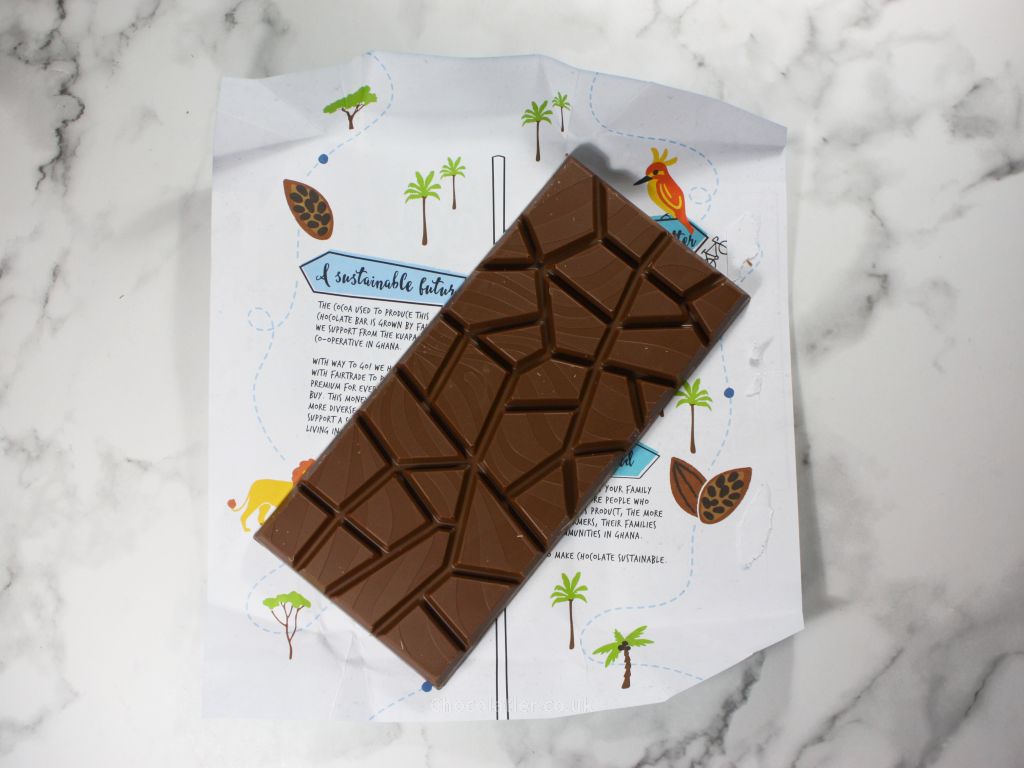
I wasn't disappointed. A wealth of information is printed inside the outer paper wrapper in full colour, designed to grab attention. It's a shame that some of this information didn't make it to the outside of the wrapper to give shoppers better information on its ethical benefits at the point of sale.
Both bars are wrapped in a silver foiled-paper, and both are moulded with a deep groove pattern, rather much like the iconic Tony's Chocolonely bars. As with those bars, snapping off pieces is a good workout for your thumbs. The snap of the dark chocolate is considerably crisper and clearer than that of the milk chocolate.
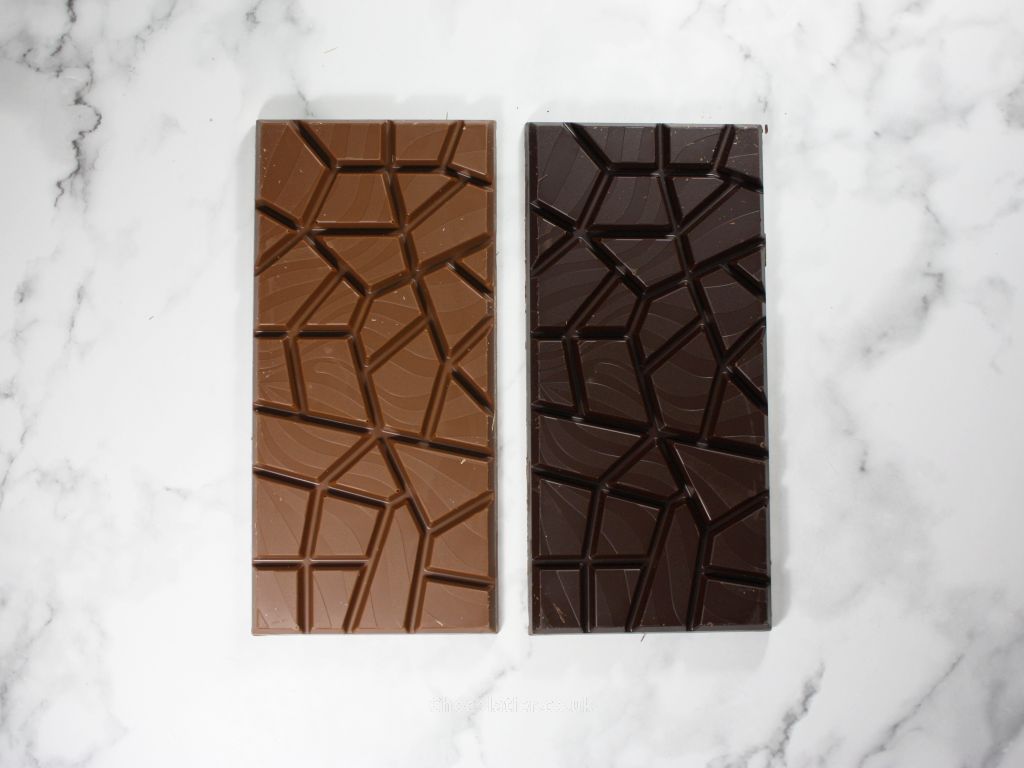
The milk chocolate has a very strong creamy, buttery aroma to it, alongside general chocolatey undertones. It reminds me of budget advent calendar chocolate or cheap Easter egg chocolate. Taste-wise, that buttery quality leads front and centre, with an abundance of sweetness. A mild cocoa flavour sits in the background, but only imparts a general chocolate vibe. This is a bar I'd scoff in front of the telly, and could probably finish off a 180g easily in one sitting (not that I'd recommend doing that).
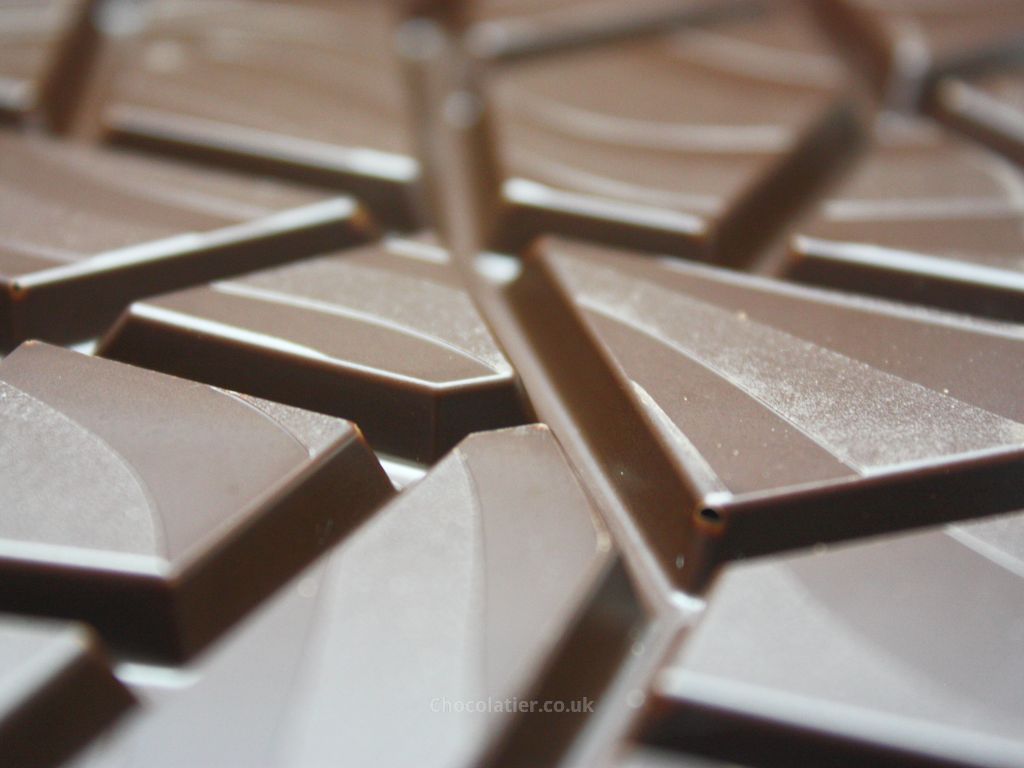
So, I like the feel-good message of the milk chocolate bar more than the taste. But what about the dark chocolate bar? It too is a chunky beast and it boasts a cleaner snap to it. It has more of a chocolatey aroma too, with earthy notes of smouldering wood. On tasting, nutty flavours come through first, followed by a mild bitterness as notes of smoke, nut, and raisin develop and pass in waves. The finish is dry, leaving a mild bitterness and an almost metallic aftertaste. This has a lot more going on in it than the milk chocolate bar, and just a few pieces at a time is enough for me.
Both chocolate bars are ideal for munching in front of the telly, but I wouldn't suggest making a dedicated trip just to find these bars. Chocolate purists and those who like a bit of excitement to their chocolate won't be particularly thrilled by either of these two.
You can't knock knowing exactly where your chocolate has come from, and Lidl should be applauded for being the first supermarket in the UK to make a fully traceable own label product. I sincerely hope this short-lived product line inspires more change within their own-brand range.
Lidl Fin Carré Way To Go! Milk & Dark Chocolate Bars Review
RRP: £1.99 | Lidl | Shop now
Lidl tries to take on Tony's with its sustainably sourced and fully traceable chocolate bar. The dark bar is better than the milk in my opinion, but both lack excitement and enjoyment. But you can't knock the fact that Lidl has commissioned a fully traceable and sustainable chocolate bar, and that effort should be applauded.
Where to Buy Online
These bars are a "middle of Lidl" product line in store from Thursday 10th July, according to their website. I was told by Lidl's Twitter team that this product was a one-off run so once it's gone, it's gone, at least for the time being.
Bars are priced at £1.99 each, but my local store was running a '2 for £3' promotion on them.
A Lidl spokesperson told me that the "Way to Go! chocolate bars were first made available in stores back in May and [Lidl] is currently in the process of gathering insight to determine whether to make this product a permanent listing."
Hopefully, sustainable, fully traceable chocolate bars will become the norm in British supermarkets soon.
Have you tried Lidl's Way To Go! Chocolate range? What did you think of the size, flavour, and ethics? Let me know in a comment below.



